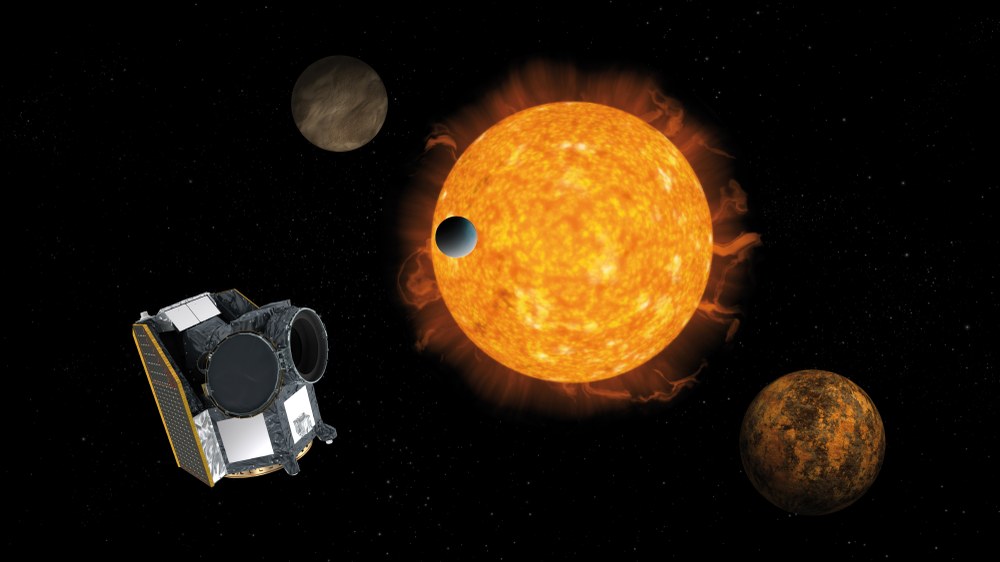CHEOPS
CHEOPS (CHaracterising ExOPlanet Satellite) – ESA’s first S-class mission – is a relatively small space telescope (32 cm diameter) dedicated to the detailed characterisation of extrasolar planets orbiting in known planetary systems. It provides the unique capability of determining accurate radii for a subset of planets for which the mass has already been measured from ground-based spectroscopic observations. Precise information about the planetary properties is a first step towards the characterisation of their internal composition, and hence towards a better understanding of planetary formation and evolution processes. CHEOPS discoveries will offer insights into the composition of small, rocky planets, as well as allowing the selection of the best targets for atmospheric characterisation with the next generation of space telescopes. The project, led by the University of Bern, is organised as a partnership between the Swiss Space Office and ESA. The payload consortium includes 11 European countries.
DLR was responsible for the design and implementation of one of the most critical elements of the instrument, the CCD sensor electronics sub-system. This unit controls the CCD detector, stabilizes its temperature to increase the precision of the measurements, and is responsible for reading the data. The institute is currently represented in the CHEOPS Board and in the Science Team, whose task is advising the PI on the scientific requirements, the core observing programme, the observation and calibration strategy, the processing and analysis of data, and the scientific exploitation of data.
CHEOPS was successfully launched on 18 December 2019. In 2023 CHEOPS completed its nominal mission of 3.5 years. During this time, CHEOPS completed more than 18,000 orbits of the Earth acquiring 700 unique scientific targets, producing over 4 million images. Around 70 papers reporting results from CHEOPS have already been published, with a further 30 or so in preparation. The good news is since CHEOPS is in excellent physical condition, it can carry on observing. In March 2023 the ESA’s Science Programme Committee confirmed the good news and the first mission extension until the end of 2026 was approved. CHEOPS results are improving our understanding of the formation processes of multiple planetary systems and of the heat distribution processes in the atmospheres of irradiated extrasolar planets.
Hardware Participation of the DLR Institute of Planetary Research
- CHEOPS Camera CCD read-out electronics
Scientific Participation of the DLR Institute of Planetary Research
- CHEOPS scientific exploitation
Further DLR Participation
Institut für Optische Sensorsysteme

